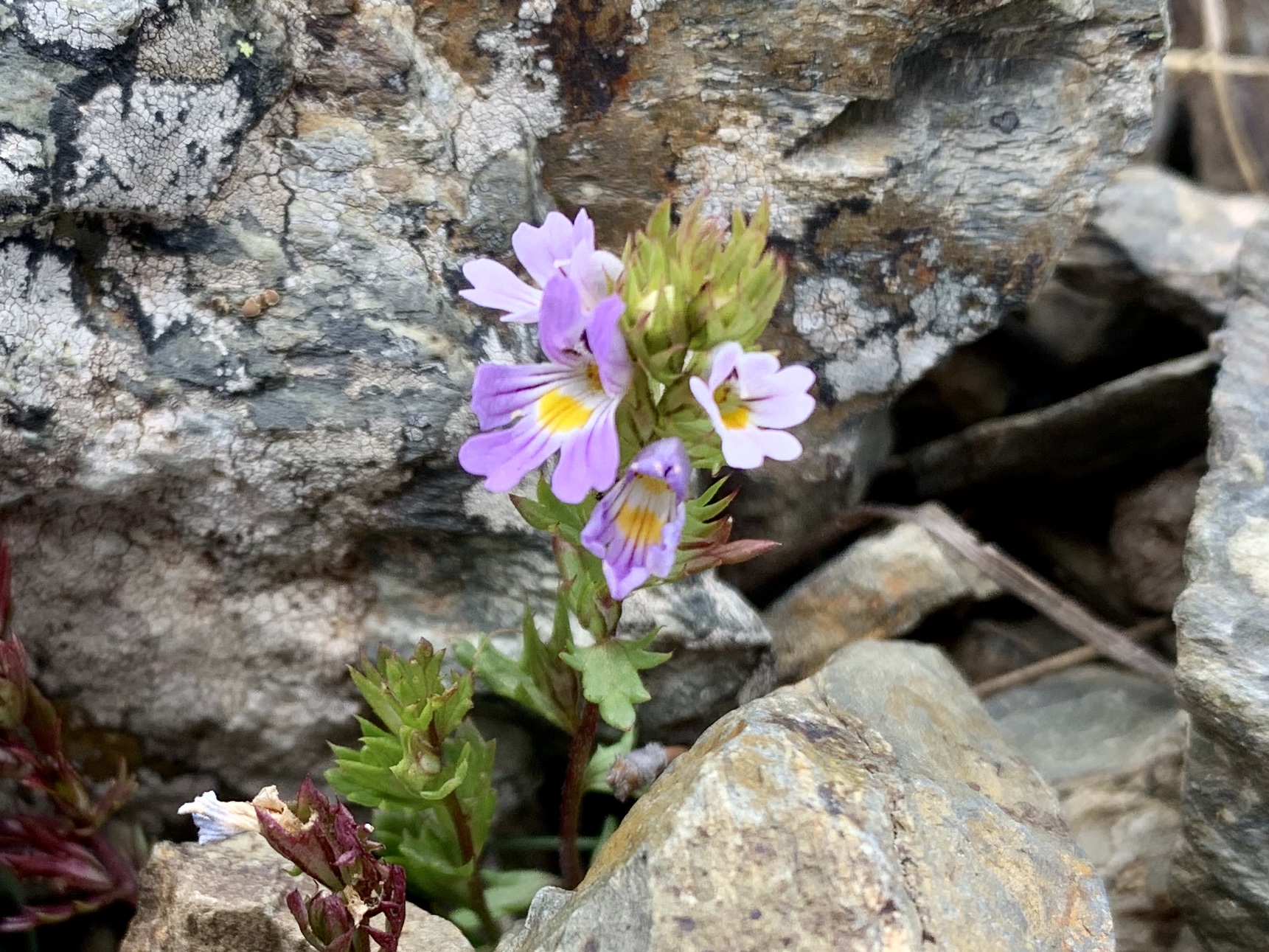What are Hemiparasitic plants? The prefix Hemi means half so they are half parasites but what does that mean? Most plants gain their energy through photosynthesis and acquire water and nutrients from the soil directly or through symbiotic associations with fungi. There are plant parasites which gain their energy and nutrients from other plants however the Hemiparasitic plants which are green, perform photosynthesis but at the same time attack the vascular systems of other plants and exploit the host sap for both mineral nutrients and water.
Hemiparasitic plants have reduced or non existing root networks and attach to the roots of other species via specialised plant structure called haustoria (meaning to draw or absorb water) these attachments have the effect of weakening the host and often during drought conditions the Hemiparasitic plants appear more green than their hosts.
This ability to suppress host species growth and affect nutrient flows in ecosystems results in these plants being considered keystone species or ecosystem engineers, regulating the structure and function of host communities altering the plant community allowing more diversity so not only theives, but robin hoods too. An example of the altering process can be seen with Yellow rattle (Rhinanthus minor) which feeds of grasses weakening them and allowing other wild flower plant species to grow in meadows increasing plant and other species diversity.
Hemiparasitic species occur in many ecosystems and appear both here in the UK and in Europe in both lowland and upland environments. here are a select few that I have come across.
Common cow wheat (Melampyrium Pratense)
This plant is found on acidic soils of woodland edges, heaths and upland moors it has golden flowers and narrow pointed leaves. It parasitises mainly woody plants in lowland environments such as Oak, Beech and Rowan, in heath and upland areas Bilberry, Heather and Bog Myrtle.
The nectar of Common cow wheat can only be reached by insects with long proboscis and it is the larval food plant of the rare Heath Fritillary butterfly, it also has a interesting relationship with wood ants, the flowers attract the ants with sugar and the elaiosome (seeds) of the plant resemble the cocoons of the ant and they disperse the seeds as they take them back to there nests, as the ants don’t take the seeds very far the plant is an indicator of ancient woodland.
The genus name Melampyrum, is translated to black wheat this is in reference to the fact that if seeds are included with wheat or other grain and used to make bread the bread becomes discoloured (blackened). The second part of the name pratense means ‘of meadows’.
Yellow rattles (Rhinanthus spp)
Yellow rattles (Rhinanthus spp) have tube like yellow flowers and are found in nutrient poor meadows in the UK and in Europe including alpine areas. The yellow rattles parasitises on grasses and vetches and in doing so it weaken allowing other more delicate species to come through and become established increasing species diversity.
The yellow flowers fade in the late summer and the brown seed capsules in which the seeds are can be heard to rattle when walking through or in the breeze hence its common name of rattle.
As well as reducing the growth of grasses the plant itself is a food plant for a number of moth species and the flowers are attractive to a number of bumble bee species.
The name Rhinanthus is translated to nose flower a reference to the shape of the upper lip of the flower, some say the the flowers look like canaries hatching.
Eyebright (Euphrasia)
Eyebright (Euphrasia) species are found in many different habitats from coastal locations to high on mountains.
There are many different species which are difficult to distinguish as there are many hybrids, but most have small white flowers 5 to 10 mm with purple coloured veins and yellow central spot, some have more purple tinged flowers. They are parasitic on grasses reducing there growth and allowing the growth of other plants which would have been crowded out.
The name Eyebright is said to be derived from the Greek for Euphrasia which translates as to gladden and to gladden the eye, although it could be from its use by medieval herbalists to treat eye disorders or that the flowers look a little like eyes.
Eyebrights are Food plants for the pretty Pinion and Heath rivulet moth in the uk and are a nectar source for a number of bumblebee species and other insects.
Discover more from The Mountain Trod
Subscribe to get the latest posts sent to your email.






